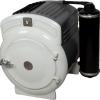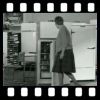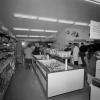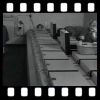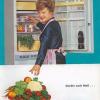Cooling the Cold War: the American fridge as a symbol
The 14th Huishoudbeurs (Home exhibition) in Amsterdam
The 14th Huishoudbeurs in Amsterdam, by Polygoon-Profilti (producent) / Nederlands Instituut voor Beeld en Geluid (beheerder), is licensed under Creative Commons - Attribution-Share Alike.
After the Second World War, American kitchens took on a new significance. During the late 1950s, they became a strong part of US propaganda efforts during the Cold War to show off American affluence and technological advancement.
Perhaps the most famous moment was on July 24, 1959 at the American Exhibition in Moscow, where Richard Nixon and Nikita Khruschchev debated in front of a General Electric kitchen exhibition, which was one of four American kitchens on display there. While the debates were hailed in the West as a propaganda victory, a number of visitors to the exhibition actually expressed disbelief or rejection of the vision that was presented.
The General Motors/Frigidaire "Kitchen of Tomorrow" was also attached to a 1957 exhibition of the peaceful uses of atomic power at Amsterdam's Schiphol airport. The affluent kitchen was meant to show the peaceful nature of atomic power, as well as the abundance of energy it would deliver. American-style refrigerators were soon on display at a range of household exhibitions.
Through shows such as this, large American kitchens, with their large and full refrigerators, became commonplace in Europe, although usually outside the walls of the home rather than within them.
 Previous Story
Next Story
Previous Story
Next Story
How to cite this page
Alexander Badenoch, 'Cooling the Cold War: the American fridge as a symbol', Inventing Europe, http://www.inventingeurope.eu/daily-lives/cooling-the-cold-war-the-american-fridge-as-a-symbol
Sources
- Castillo, Greg "The American ‘Fat Kitchen’ in Europe: Postwar Domestic Modernity and Marshall Plan Strategies of Enchantment." In Cold War Kitchen: Americanization, technology and European Users, edited by Ruth Oldenziel and Karin Zachmann, 33-57. Cambridge, MA: MIT, 2011.





